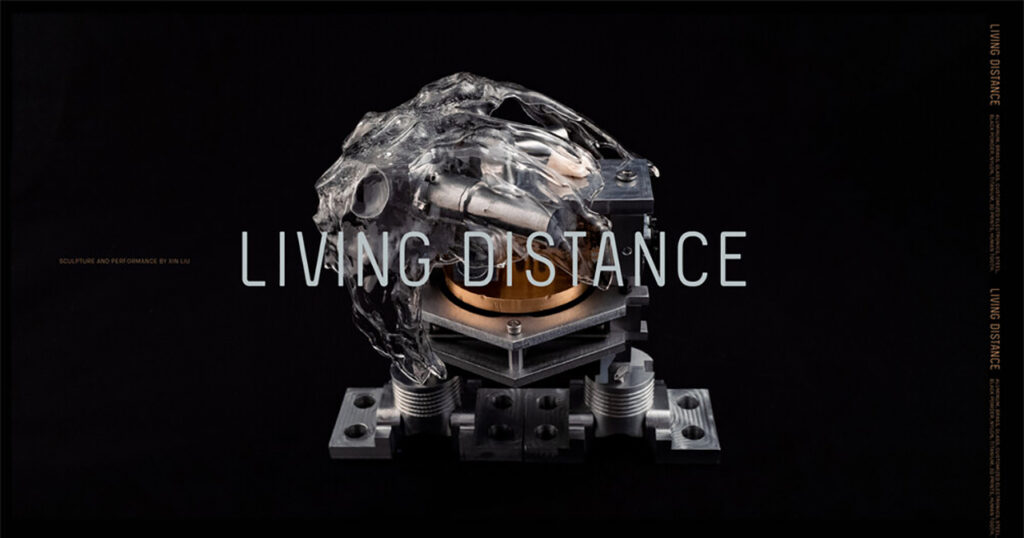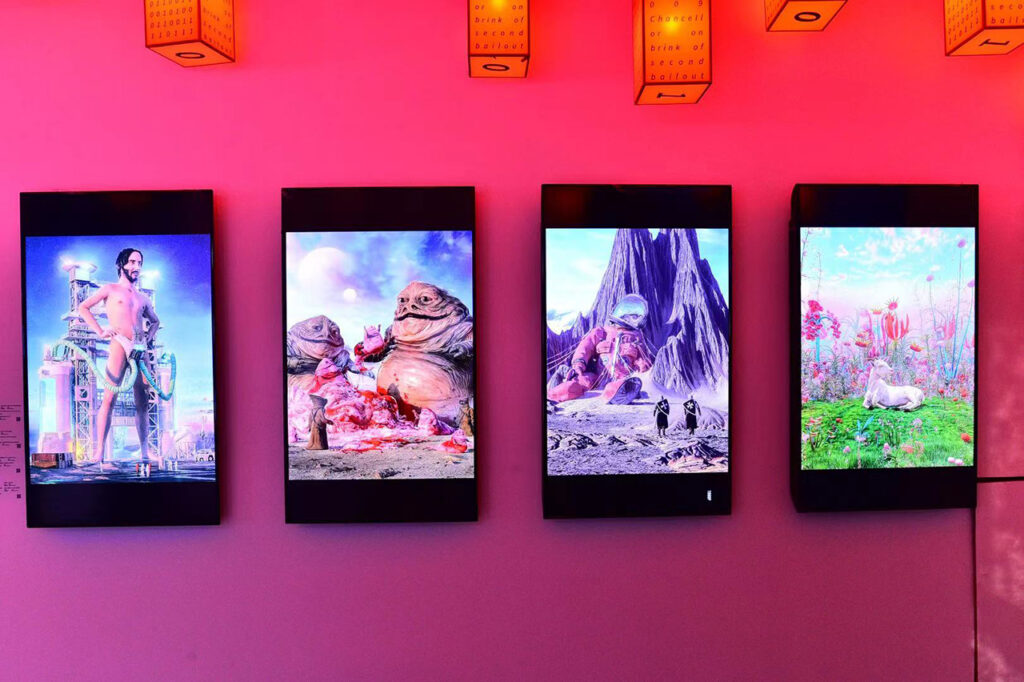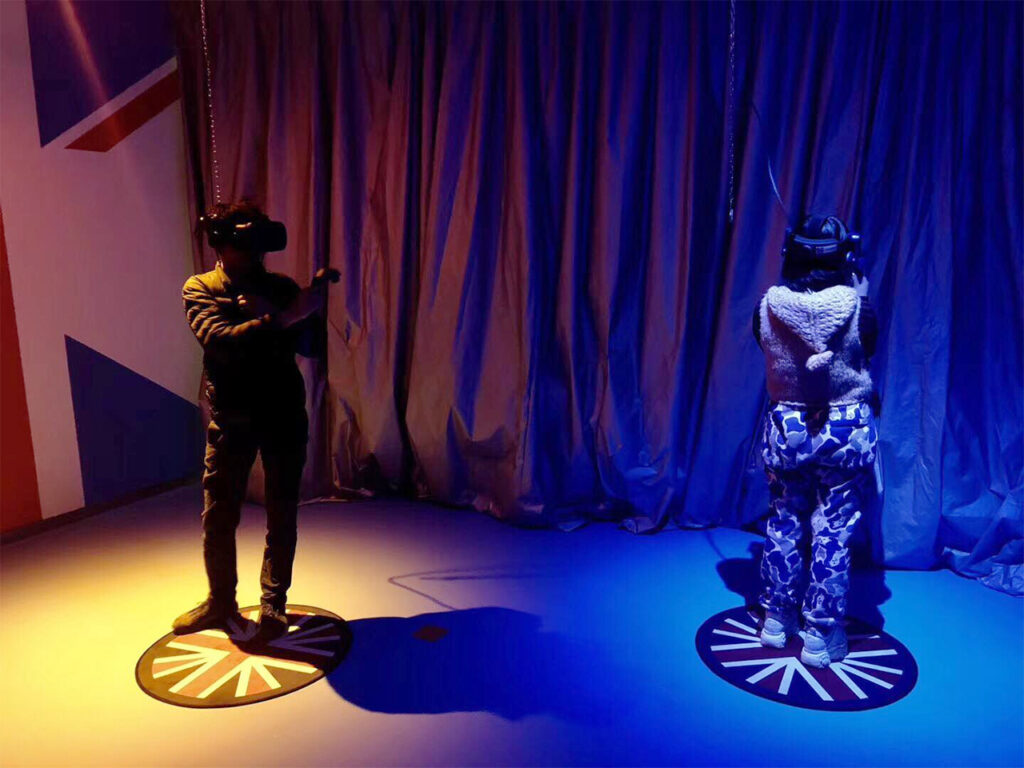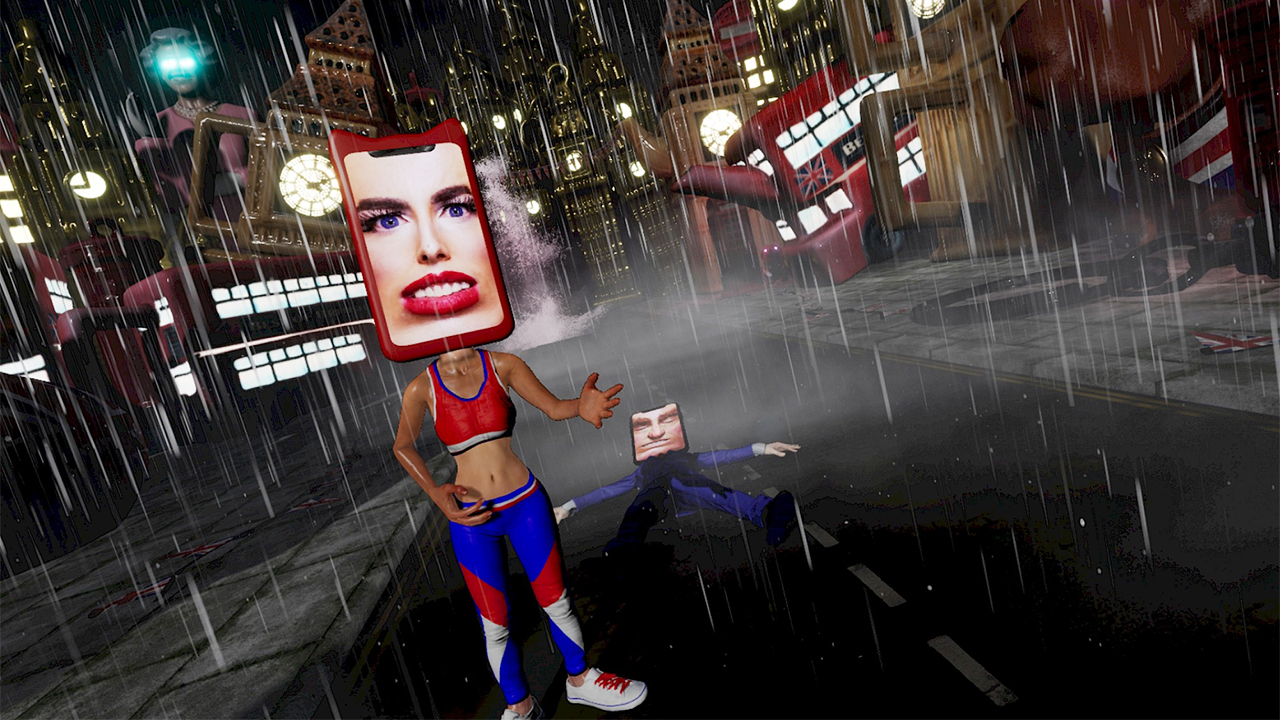What does Jenny Guo think about when she thinks about digital art? Most simply: accessibility. Of course, as an XR art collector and co-founder of LumiereVR, she’s tuned in to the “core voice and values” of digital artists and the “authenticity and sincerity” they impart to a piece of work, but what’s as meaningful to her, she tells Jing Culture & Commerce, is the medium’s demographic-defying reach, extending as it does “an invitation to everyone.”
Vital to this accessibility, she notes, is distribution. As an example, Guo recalls LumiereVR’s 2020 presentation of Chinese artist Xin Liu’s VR installation, “Living Distance: An Outer Space Performance,” for which the studio sought not showings at galleries or cultural institutions, but exhibitions at film festivals. It became the first Chinese work to be shown at Sundance, where, she says, it was “able to reach out to a different audience with different reactions to the work.”

“Living Distance,” Xin Liu’s VR experience, places the viewer in the perspective of a wisdom tooth that’s been sent to outer space. Image: xxxxxxxxxinliu.com
As with VR, so too with NFTs. “NFTs are definitely interesting to me; they’re less to do with artwork than distribution,” she says. “Before the NFT hype, it was very hard to sell digital art, but now, I’ve been witnessing a lot of digital artists who are able to sell some work.”
In fact, the increased appetite and demand for digital collectibles over the past number of months haven’t just forced galleries and auction houses to contend with the crypto sphere, but has left the door open for a new generation of art collectors. Young, online, and culturally omnivorous, these new buyers are set to disrupt art creation, commerce, curation, and collection. “I already see the attitude shifting even within the community,” says Guo. “People are now looking for curators who understand this shift — not necessarily just the value behind digital art, but also the culture because the demographics are different.”
This emerging buyer class was a focus of Guo’s June 9 talk at the Digital Art Collector Summit presented by Larry’s List, at which she underscored how the tastes and behaviors of today’s collectors are poised to reshape tomorrow’s digital sales and phygital experiences. Below, she shares more with JCC about this new age of digital collecting.
In your years of collecting XR art, what changes have you noticed in buyers’ perspectives of or appetites for digital art?
I remember in 2018, I was on a panel at Christie’s talking about VR and VR collecting. Many people didn’t really get it. I was trying to say that you’re not just collecting a piece of art, you’re collecting a world, but for people then, it was a very vague concept. But I think during the pandemic, people suddenly sort of got the idea when everything became digitized. And especially with the NFT hype, it really shone the spotlight on digital art.
What has the arrival of NFTs meant for art market players?
I definitely feel like this market is very different from the traditional art market. You have a new group of buyers coming in, which I think is really fascinating because these people are not necessarily trained curators, critiques, or collectors. But they represent a culture as well — crypto as a subculture. And once there’s a culture, there’s a voice. These collectors collect things that resonate with them. They want to show their collection on Instagram or Twitter to express, “This is a relationship I have with this piece of work.” Traditional collectors might only invite private guests to view their collection or occasionally show it at a gallery, but digital art is very accessible to every single person.

Virtual Niche at the UCCA Lab, billed as the first physical NFT exhibition, featuring Beeple’s Everydays: The 2020 Collection. Image: UCCA
What do you make of art sellers’ approach to this new audience?
I feel that the traditional galleries will have a hard time reaching out to these buyers. Everything now is almost based on influencers rather than someone like an art critic with an art world understanding. Galleries need new types of curators or even managers who actually understand the crypto culture to really dive into the crypto buyer. This is also an opportunity for the industry to seriously look at the digital arts, this medium that’s been out for so long and that’s not really had a spotlight.
It’s definitely a practice that’s often been overlooked and almost underestimated by traditional art world gatekeepers.
I was talking about that a couple of years ago, when teamLab became really hot and people were criticizing them for not really being art. But whatever is said about teamLab’s work, it’s proof that even a three-year-old can have a good time with art. What we’re going through in this digital age is really interesting because every single day, we’re opening Instagram and constantly consuming digital content. This content is created by content creators and by digital artists, but we don’t pay for that. This is why we didn’t have that kind of buying behavior that’s correlative with digital content, but right now we do with NFTs. It’s a new market that I feel very positive about. I’m very interested in how the curation is going to work out in VR or even how AR can help artists curate.

The opening of Rachel Maclean’s first solo exhibition in China, featuring “I’m Terribly Sorry,” produced and distributed by LumiereVR, at KWM Art Center. Image: LumiereVR on Facebook
What about virtual lands like Decentraland and Cryptovoxels? Do you think they might offer a solution to digital curation?
Not necessarily. I think it should be a new type of curation because the people who created these platforms are crypto people. VR is definitely a tool, but I feel like people need to understand the art, how to establish a world, and how to present an artist’s work. But I’ve started to see a lot of really interesting curated platforms coming out, which will be nice for artists to present work in different types of worlds with different types of interaction. The distribution and monetization will be very different too. And it will be interesting to see how the role of the gallery will change and adapt as well.
What excites you about where digital art and digital experiences are headed?
I think we’re going through a hybrid phase in terms of tangible to intangible, physical to digital. We still enjoy going to a gallery to see a painting — you never can replace the gravity of a painter’s stroke. So you still need something tangible or physical that you can touch and feel, but also, you’re going to have something digital. It’s almost like the retail brands who want to have a location-based pop-up, but who also want to connect online. We need to figure out how to use technology to combine these worlds.



